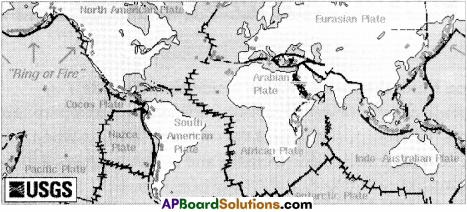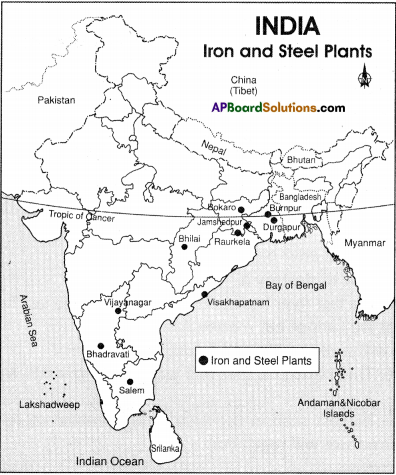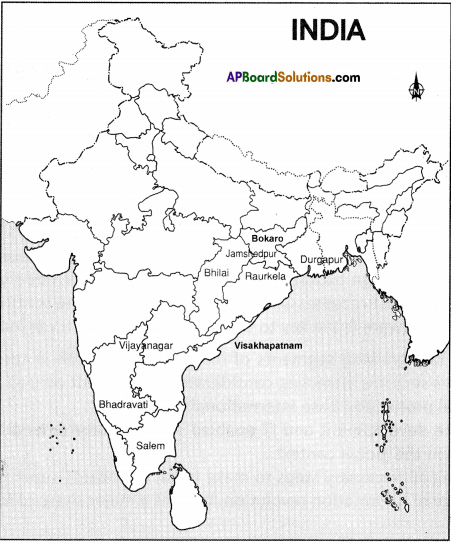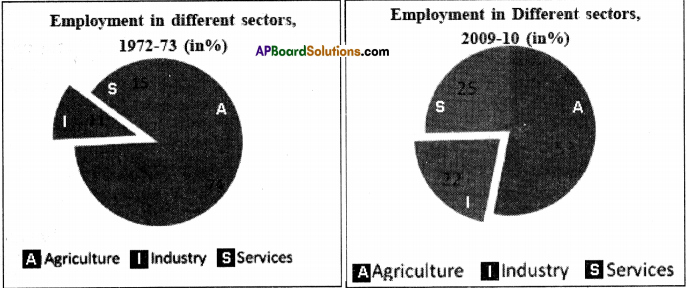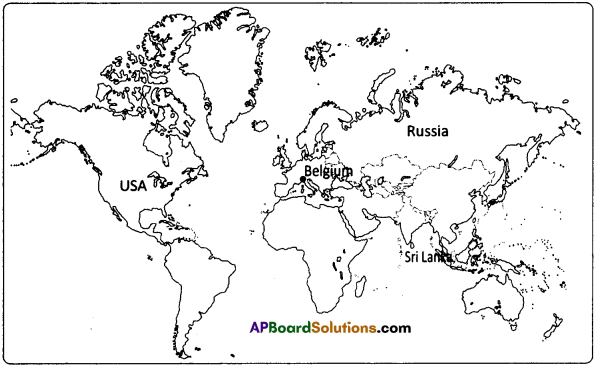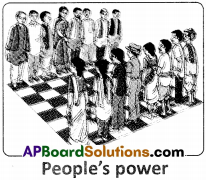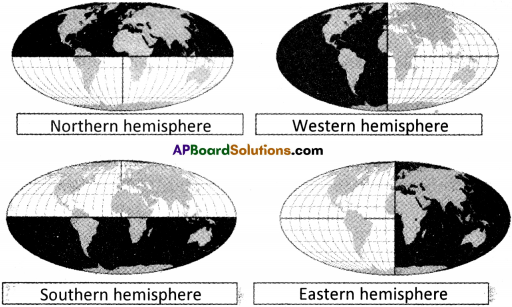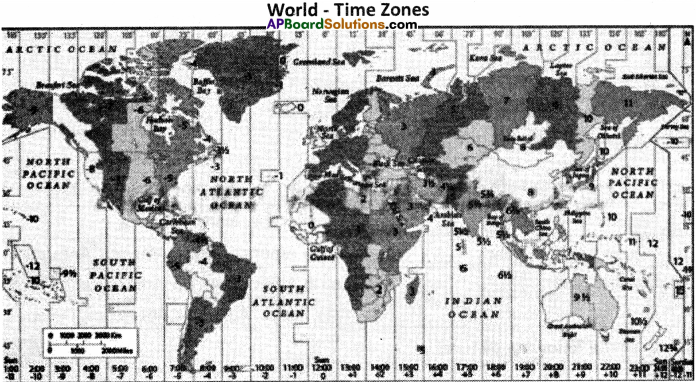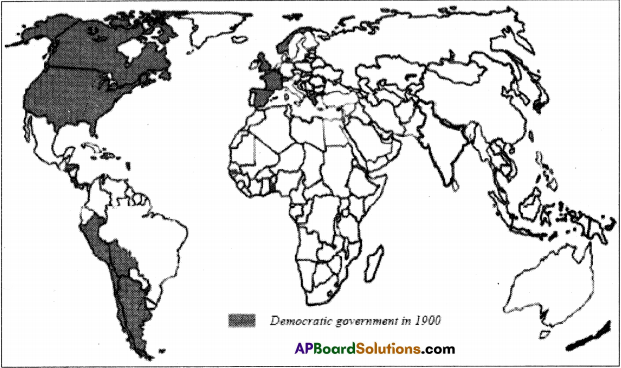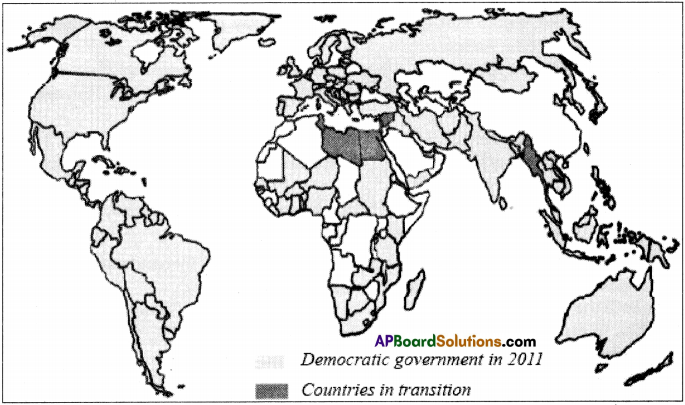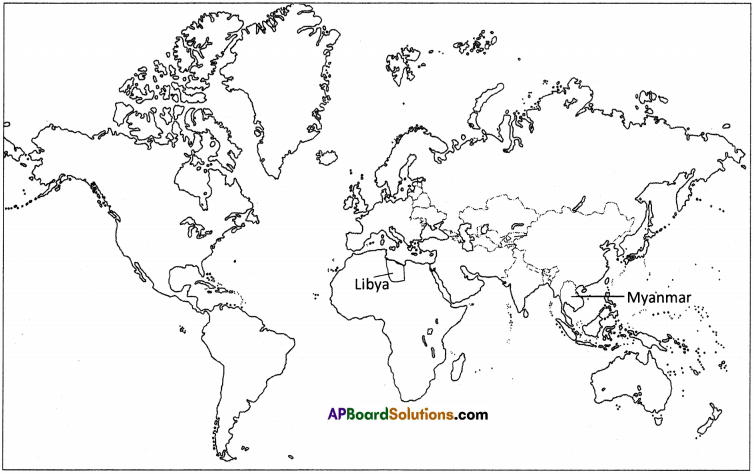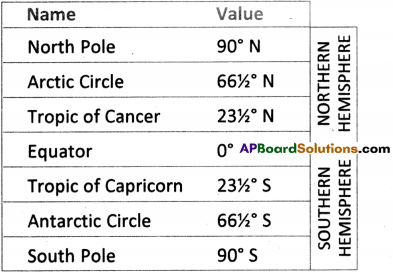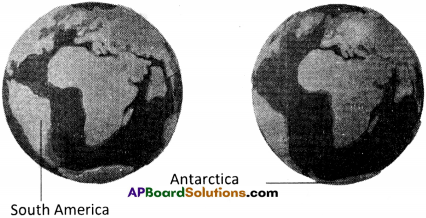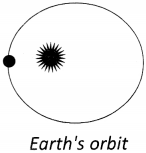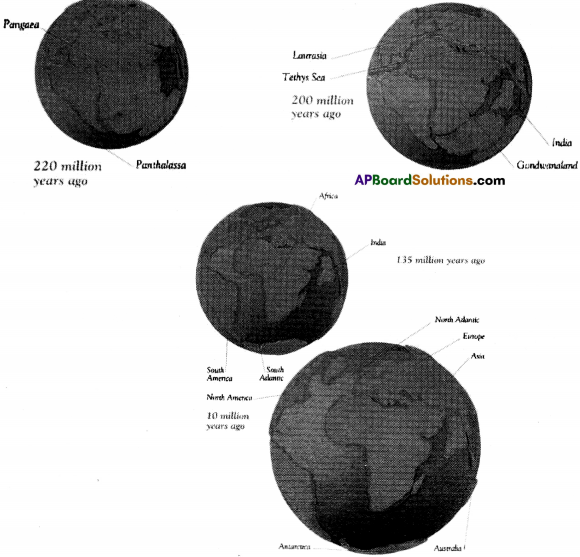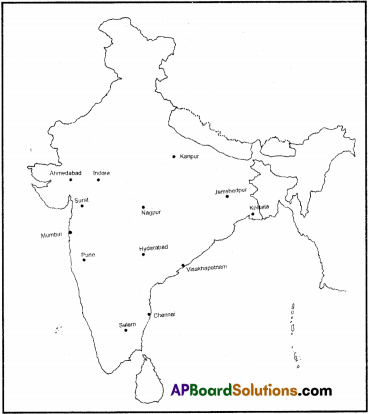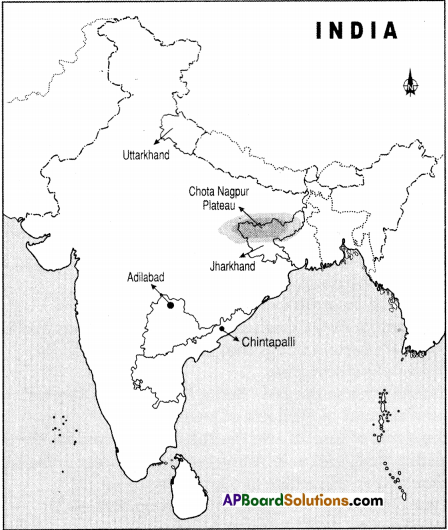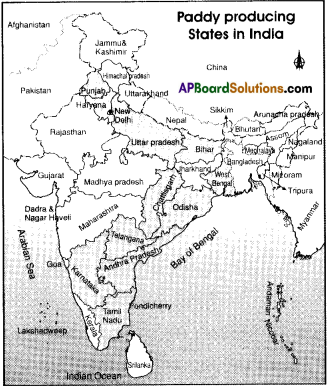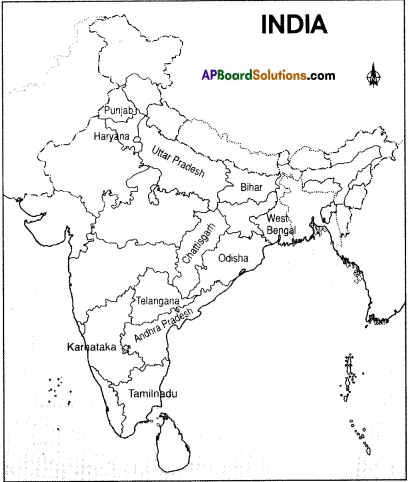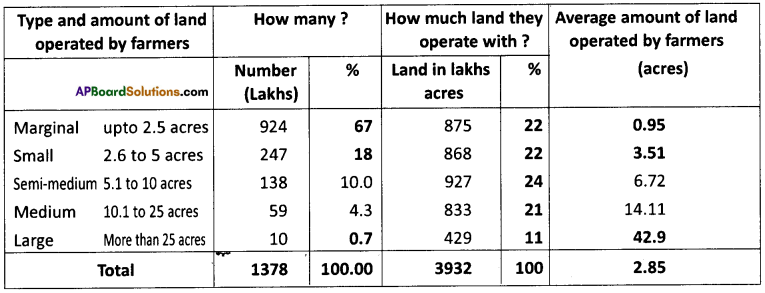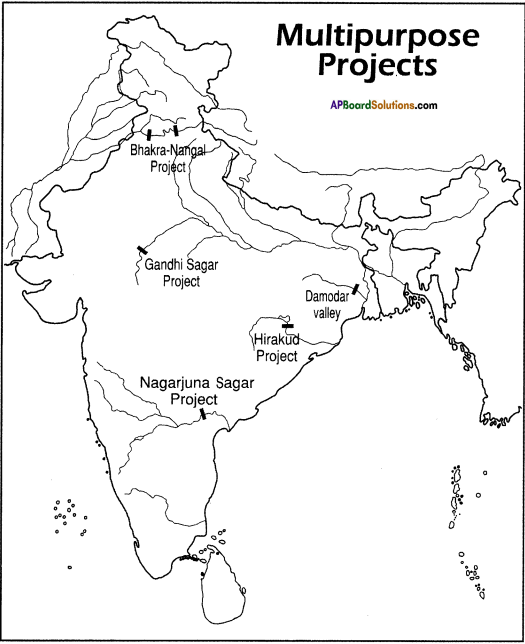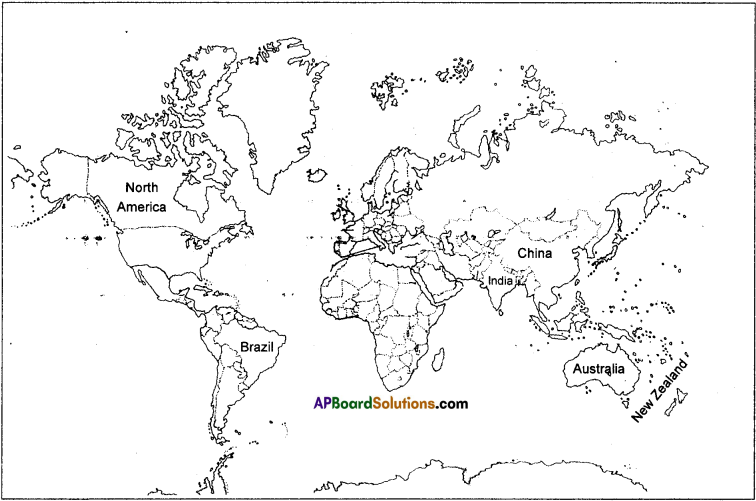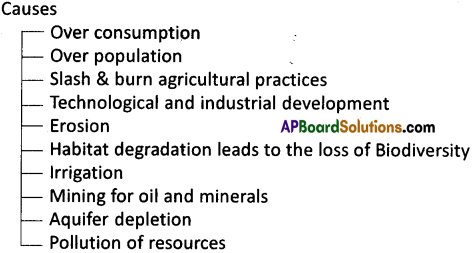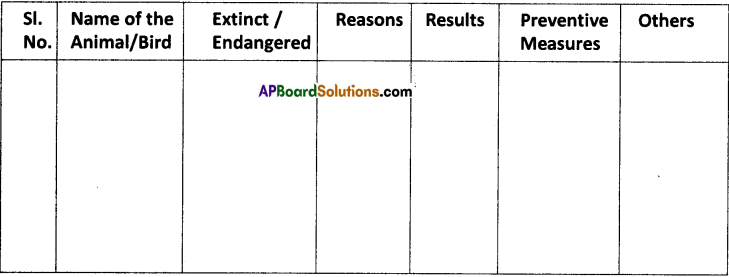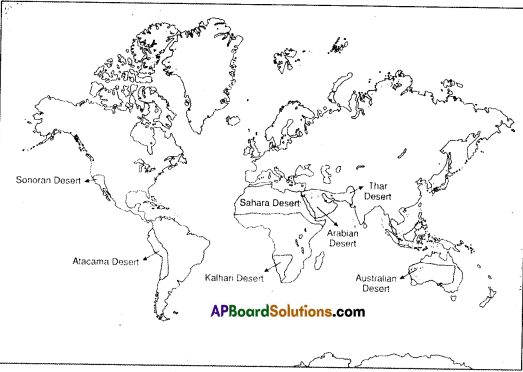SCERT AP Board 9th Class Social Solutions 15th Lesson Industrialisation and Social Change Textbook Questions and Answers.
AP State Syllabus 9th Class Social Studies Solutions 15th Industrialisation and Social Change
9th Class Social Studies 15th Lesson Industrialisation and Social Change Textbook Questions and Answers
Improve Your Learning
Fill in the blanks with correct options :
Question 1.
Britain did not depend on different parts of the world for ________ and ________ (labourers; raw material; capital; inventions)
Answer:
labourers, capital
Question 2.
Two important types of transport during the Industrial revolution were ________ and ________ (road, air, water, rail)
Answer:
water, rail
![]()
Question 3.
Write two sentences each on following aspects in the context of Industrial revolution:
a) Technology
b) Financing and money
c) Agriculture revolution
d) Transport systems
Answer:
a) Technology :
The commencement of industrial revolution is closely linked to a small number of innovations, beginning in the second half of the 18th century. By the 1830s the following gains had been made in important technologies, e.g. : Textiles, steam power and iron making.
b) Financing and money:
The whole industrial revolution got founded by a few people who held power to issue essentially infinite credit. Most new industries were financed by small investors, merchants, shopkeepers and farmers.
c) Agriculture Revolution :
The Agriculture Revolution was period of agriculture development between 18th and the end of 19th century, which saw a massive and rapid increase in agricultural productivity and vast improvement in farm technology. Many inventions were created and improved during this revolution.
d) Transport Systems :
The growth of industrial revolution developed on the ability to transport raw materials and finished goods over long distances. These facilities were of three main types – Water ways, Roadways and Rail roads.
Out of these three, water transportation was the cheapest.
![]()
Question 4.
What do you think is special about inventions happening during the industrial revolution ?
Answer:
- Most inventions were more the product of determination, interest, curiosity, even luck, than the application of scientific knowledge.
- Some inventors in the cotton industry, like John Kay and James Hargreaves, were familiar with the skills of weaving and carpentry.
- Richard Arkwright, however, was a barber and wig-maker, Samuel Crompton was not technically skilled and Edmund Cartwright studied literature, medicine and agriculture, initially wished to become a clergyman and knew little of mechanics.
- By contrast, in the area of steam engines, Thomas Savery, an army officer, Thomas Newcomen, a blacksmith and locksmith, and James Watt, with a strong mechanical bent, all had some knowledge relevant to their inventions.
- The road-builder John Metcalf, who personally surveyed surfaces for roads and planned them, was blind.
- The canal builder James Brindley was almost illiterate, with such poor spelling that he could never spell the word ‘navigation’, but he had tremendous powers of memory, imagination and concentration.
Question 5.
How were the lives of different classes of British women affected by the Industrial revolution?
(OR)
“All classes of British women were affected by the industrial revolution” Write your comments.
Answer:
- The Industrial Revolution was a time of important changes in the way that women worked.
- The village women were actively involved in farm work, they reared livestock, gathered firewood and spun yarn on spinning wheels in their homes.
- Their earnings were necessary to supplement men’s meagre wages.
- Women were the main workers in the silk, lace making and knitting industries, as well as in the metal industries of Birmingham.
- Women may well have gained increased financial independence and self-esteem from their jobs; but this was more than offset by the humiliating terms of work they endured.
- Most classes eventually benfited in some way from the huge profits.
Thus the lives of different classes of British women were affected by the industrial revolution.
![]()
Question 6.
What were the relative advantages of canal and railway transportation?
Answer:
- It is easy to shipping goods.
- Both are cheap means of transport when compared to roadways.
- Bulk quantity of goods can be transhipped.
Question 7.
Locate the places where iron and textile Industries are mainly concentrated in England during Industrial revolution.
Answer:
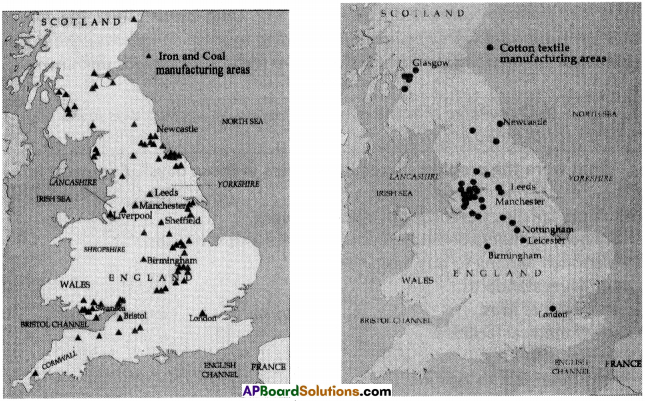
Question 8.
Prepare a table on invention during the time of Industrial Revolution.
Answer:
| Inventions | Inventors |
| Cotton – textile | |
| 1. Flying shuttle – 1733 | John Kay |
| 2. Waterpowered loom – 1784 | Edmud Cartwright |
| 3. Spinning Jenny – 1764 | James Hargreaves |
| 4. Spinning mule – 1779 | Samuel Crompton |
| 5. Cotton gin – 1794 | Eli Whitney |
| 6. The Factory system – 18th Century | Richard Arkwright |
| 7. Stem engine – 1712 | James Watt |
| 8. Steam boat – 1786 | Robert Fulton |
| 9. Rail roads – 1869 | George Stephenson |
| 10. Steel making – 1855 | Henry Bessemer |
| 11. Electricity and the light bulb – 1879 | Thomas Edison |
| 12. Road building – 1836 | John Loudon Mc Adam |
| 13. Photography – 1839 | George Eastman |
| 14. Telegraph – 1837 | Samuel F B Morse |
| 15. First electric lamp – 1809 | Humphy Dally |
Question 9.
Read the para under the title “The workers” of Page No. 192 and comment on it.
| The Workers : A survey in 1842 revealed that the average lifespan of workers was lower than that of any other social group in cities: it was 15 years Birmingham, 17 in Manchester, 21 in Derby. More people died, and died at a younger age, in the new industrial cities, than in the villages they had come from. Half the childern failed to survive beyond the age of five. The increase in the population of cities was because of immigrants, rather than by an increase in the number of childern born to families who already lived there. Deaths were primarily caused by epidemics of disease that sprang from the pollution of water, like cholera and typhoid, or of the air, like tuberculosis. More than 31,000 people died from an outbreak of cholera in 1832. Until late in the nineteenth century, municipal authorities were negligent in attending to these dangerous of life. The medical knowledge to understand and cure these diseases was unknown. |
(OR)
| A survey in 1842 revealed that the average lifespan of workers was lower than of any other social group in cities |
Q: “What were the problem faced by workers in those days”. Comment it.
Answer:
- The life of the workers was hard.
- Multiple families were living in one apartment.
- Very poor sanitary conditions in the factories and in houses.
- No enough earning to buy basic needs.
- Poor living standards.
- Short span of lives.
- Lack of medical facilities.
- Epidemic diseases.
It was miserable to lead life.
![]()
Question 10.
Mention the consequences of the Industrial Revoltuion in the Economic field. Write a report and present in your class.
Answer:
Some 20th century historians argued that the process of economic change took place gradually.
- GDP, per capita income was broadly stable before the industrial revolution and the emergence of the modern capitalist economy.
- The Industrial Revolution began an era of per capita economic growth in capitalist economies.
- Economic historians are in agreement that the onset of the industrial revolution is the most important event in the history of humanity.
- Rapid increase in technology which affects production.
- Standardisation of production process and parts.
- Substantially lower transportation costs and development of improved transportation systems.
- Better and cheaper intermediate good production and
- Vast increase in global trade.
9th Class Social Studies 15th Lesson Industrialisation and Social Change InText Questions and Answers
Question 1.
Write two important inventions which revolutionised the textile industry. (Text Book Page No. 188)
Answer:
- Water powered loom – Edmund Cartwright.
- Spinning Jenney – James Hargreaves.
Question 2.
Mention two important industrialisation effects on women and children’s life. (Text Book Page No. 193)
Answer:
- Women lost their family life and children their childhood.
- Women had gained increased financial independence and self-esteem. Children worked in factories and stayed away from education.
![]()
Question 3.
Compare the industrialisation in Germany and France. Identify similarities and differences. (Text Book Page No. 195)
Answer:
Similarities :
- Germany and France lacked colonial resources.
- In both the countries industrialisation received a boost by the introduction of.railways in 1830s.
- Railways stimulated trade, communication and economic growth.
Differences :
| Germany | France |
| 1) German industrialisation was greatly facilitated by the German government. | 1) France, in contrast, was slow in industrialising. |
| 2) The needed heavy capital investment was received from large banks. | 2) France did not develop banks which could mobilise large amount of capital and lend them to industrialists. |
| 3) Market facilities were provided on large scale. | 3) Market facilities were provided after 1860. |
| 4) Germany gained back her coal mines. | 4) France lost her coal mines to Germany. |
| 5) The industrial units were very large. | 5) The units were run at homes only. |
Question 4.
Discuss the developments in Britain and in other parts of the world in 18th entury that encouraged British Industrialisation. (Text Book Page No. 187)
Answer:
- The Industrial Revolution took place in Great Britain almost a century before any other country.
- At that time Great Britain was a very powerful country that controlled many colonies.
- The country gained abundant useful resources from these colonies that aided its growth.
- The country had also just experienced an Agriculture Revolution.
- The country could support the demand for workers in factories. It has many natural resources.
- During the Industrial Revolution, the government of Britain was stable, wealthy and supportive of economy growth. So the Industrial Revolution was emerged first in Great Britain.
- The Industrial Revolution on continental Europe came a little later than in Great Britain, this involved the application of technology developed in Great Britain in new places. Often the technology was purchased from Britain or British engineers and entrepreneurs moved in search of new opportunities.
- The German, Russian and Belgian governments also provided state funding to the new industries.
- France’s economic growth industrialisation process was slow and steady along the 18th and 19th centuries.
- U.S. also supported Industrial Revolution and provided fuels for economic and industrial growth.
- Japan : There Industrial Revolution began about 1870 as Meiji period leaders decided to catch up with the west.
![]()
Question 5.
Discuss the effects of early industrialisation on British towns and villagesandcompare these with similar situation in India. (Text Book Page No. 194)
Answer:
New technology and techniques in agriculture paved the way for change. As surplus of cheap agriculture labour led to serve unemployment and rising poverty in many rural areas. As a result, many people left the countryside to find work in towns and cities. So the scene was set for a large scale labour intensive factory system. It led to urbanization.
In India during colonial rule, the British exported all the raw material to Britain. They did not establish or develop any industry here. They did not encourage the agriculture. They imported the finished goods. Both the agriculture and cottage industries were disturbed. As the agriculture is the backbone of India, the dependants suffered a lot. The dependants on agriculture became cheap labour.
Question 6.
What factors enabled Germany to outstrip England and France in industrialisation? (Text Book Page No. 195)
Answer:
The factors that enabled Germany to outstrip England and France in industrialisation:
- Its government assistance.
- Transport facilities.
- The governments’s control over working class, movement with a heavy hand.
- The government provided for many social benefits and insurance for the workers.
- Benefit from the technical developments achieved by Britain and U.S.A.
- Heavy capital investment facilities from large banks.
- A great proportion of Germany’s industrial production was used to build up Germany’s military and naval power.
![]()
Question 7.
Why is high quality steel and iron necessary for industrialisation? Discuss in the class. (Text Book Page No. 188)
Answer:
Throughout the 18 and 19 centuries the English steel and iron makers produced blister and crucible steel and iron. In the 18th century innovations like steam boats, rail road and guns increased the demand for fine iron and steel.
Question 8.
Why do you think the mining of iron ore and coal received equal importance? (Text Book Page No. 188)
Answer:
I think coal is used for smelting iron. So the mining of iron ore and coal received equal importance.
Question 9.
Why do you think the early industrial centres were situated near the iron and coal mines? (Text Book Page No. 188)
Answer:
I think there were no proper transportation facilities to transport the coal and iron. And it is very difficult also to transport such heavy things from one place to another place. Later the canal and rail road transports were introduced and developed. So the early industrial centres were situated near the iron and coal mines.
Question 10.
Why do you think France lagged behind in industrial development? (Text Book Page No. 195)
Answer:
France was slow in industrialising. Even by the end of 19th century she remained a rural country with a large majority of people cultivating small plots of land. Manufacturers found it more profitable to give out work to rural workers who worked at home rather than to set up factories in towns. Such rural domestic production began to decline after 1850 resulting in economic adversity for the people. Machines in towns began to take over much of the work and only delicate hand work was given out to rural workers. Much of French industrialisation was a result of the spread of railway and road networks after 1860 which created a wide market for its industrial goods.
France also did not develop Banks which could mobilise large amount of capital and lend them to industrialists. As a result most of French manufacturers depended upon family resources. They remained small companies as a result. It also made them slow in adopting new ideas and technologies.
Heavy industry based on iron and coal was slow to develop in France as she did not have good reserves of coal and depended upon expensive imports. Thus French industrialisation remained focused on consumer products like textiles, which were basically small scale enterprises. This was in contrast to the German and British Industrial situation where heavy industries predominated.
So France lagged behind industrial development.
![]()
Question 11.
What were the difficulties faced by women and children during industrial revolution? (Text Book Page No. 186)
(OR)
What are the difficulties faced by Women and Children during industrial revolution? What is your reaction towards this?
Answer:
The following selections are testimonies from England and Wales collected by Parliamentary Commission who began to investigate the industrial employment of women and children in the early 1840s.
- Working conditions were unsanitary and the work was dangerous.
- Education of the children suffered because of the demands of work.
- Home life suffered as women were faced with the double burden of factory work formed by domestic chores and child care.
- Men assumed supervisory roles over women and received higher wages.
- Unsupervised young women away from home generated societal fears over their fate.
- As a result of the need for wages in the growing cash economy, families became dependent on the wages of women and children.
- There was some worker opposition to propagate that child and female labour should be abolished from certain jobs.
- Children as young as 5 years old worked hard hours for little or no pay (sometimes 19 hours a day)
- Large, heavy and dangerous equipment was very common for children to be using or working near.
- Many accidents occurred injuring or killing children on the job.
My reaction :
This is very cruel and inhuman treatment. If it is there now-a-days the factory owners should be punished by govt severely.
